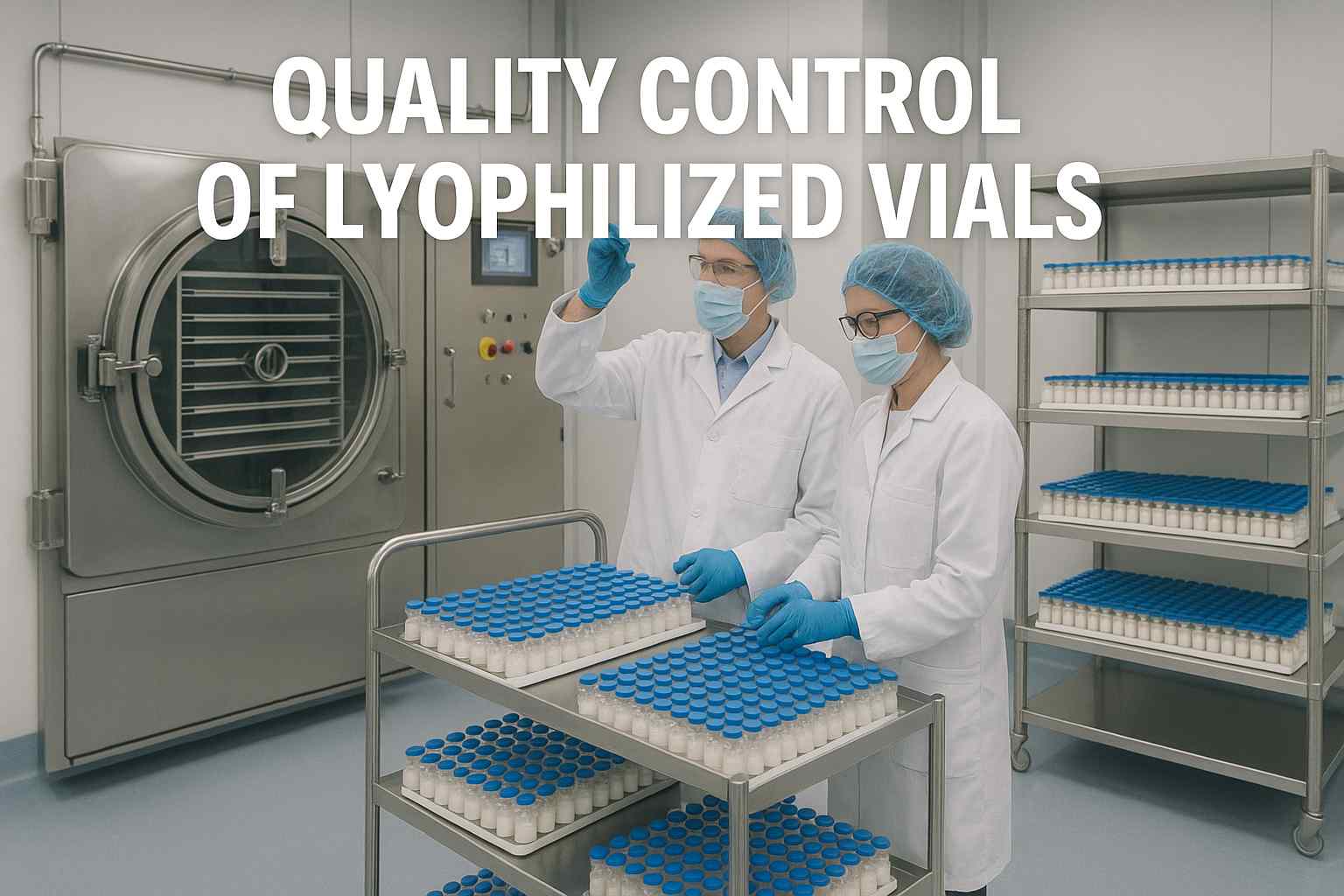In the pharmaceutical freeze-drying QA guide industry, freeze-drying (lyophilization) is a crucial process that preserves the stability and potency of drugs, especially injectable biologics and vaccines. However, maintaining product quality requires more than just an efficient freeze-drying setup—it demands a well-structured Quality Assurance (QA) strategy. This Pharmaceutical Freeze-Drying QA Guide offers an in-depth look at key QA practices that ensure compliance, product integrity, and safety from production to packaging.
Why QA Is Critical in Pharmaceutical Freeze-Drying
Lyophilized drugs are often sensitive and highly potent. Even minor deviations during the freeze-drying process can compromise efficacy or introduce contaminants. Thus, implementing a robust QA protocol is essential to:
- Maintain uniformity across production batches
- Detect and prevent critical defects
- Comply with cGMP and FDA regulations
- Ensure product sterility and shelf life.
For a deeper dive into quality standards, explore this comprehensive guide to lyophilized product quality.
Key Elements of Freeze-Drying QA
1. Pre-Freeze-Drying Inspections
Before lyophilization begins, a batch inspection checklist ensures the equipment and materials meet standard specifications. This batch inspection checklist helps identify any issues early, such as glass vial defects, temperature sensor errors, or packaging problems.
2. Monitoring Freeze-Drying Parameters
Control over temperature, pressure, and time is vital. Overshoots or fluctuations can lead to glass fogging, product collapse, or incomplete sublimation. Understanding and optimizing these parameters is key—check out the essential guide on freeze-drying process parameters to know more.
Also, the role of dry layer resistance during primary drying cannot be underestimated. Monitoring this resistance helps in adjusting shelf temperatures and chamber pressure, optimizing drying efficiency. Read the full guide on dry layer resistance.
Common Defects and Their Classification
Freeze-dried products may suffer from cosmetic, critical, or functional defects, such as
- Collapsed cake
- Glass particles
- Container-closure integrity failure
To categorize and understand these issues, refer to the detailed defect classification in lyophilized products. Early identification ensures that only products meeting stringent quality standards move forward in the supply chain.
For specific concerns like glass particles, this focused guide discusses how to detect and eliminate contamination during freeze-drying.
QA in Biopharmaceutical Applications
Pharmaceutical QA extends to biopharmaceuticals, where freeze-drying stabilizes complex proteins and peptides. This specialized area requires strict controls to avoid structural degradation. You can read more about its diverse applications in this guide on freeze-drying in biopharmaceuticals.
Energy Efficiency and Equipment Qualification
Quality also involves sustainability and equipment validation. Modern facilities are exploring energy efficiency improvements in lyophilization to reduce costs without compromising quality.
Additionally, proper commissioning, operational qualification (OQ), and performance verification are crucial. Refer to the following resources for step-by-step best practices:
- Commissioning of lyophilization units
- Freeze dryer operational qualification protocol
- Performance testing methodology
Reconstitution and Post-Process Considerations
The QA journey doesn’t end with freeze-drying. Post-process testing—especially reconstitution testing—ensures the drug can return to a usable state without losing potency. For guidance, follow this complete guide to reconstituting lyophilized drugs.
Additionally, QA teams should regularly check for extractables, leachables, and chemical interactions that may occur with container materials. Read about extractables and leachables issues to prevent regulatory risks.
Final Thoughts on Freeze-Drying QA guide
A successful pharmaceutical freeze-drying process depends heavily on quality assurance—from raw material checks to final product release. By adopting comprehensive QA practices, pharmaceutical companies can ensure patient safety, regulatory compliance, and long-term drug stability.
If you’re aiming for consistency, safety, and regulatory readiness in your freeze-drying operations, use this guide as your foundation—and don’t miss our complete collection of expert content and QA checklists at asitafreezedryer. Defects
Related Reads:
- Defects in Lyophilized Products: A Complete Easy Guide
- Lyophilizer Cleaning Validation
- Lyophilized Drug Stability
✅ FAQs: Pharmaceutical Freeze Drying QA Guide
Q1. What is pharmaceutical freeze-drying QA?
A: It refers to quality assurance processes during lyophilization that ensure drug stability, sterility, and regulatory compliance.
Q2. Why is QA important in freeze-dried pharmaceuticals?
A: QA ensures product uniformity, prevents defects, and safeguards against contamination, preserving drug efficacy and safety.
Q3. What parameters are monitored during pharmaceutical freeze-drying?
A: Key parameters include shelf temperature, chamber pressure, dry layer resistance, sublimation rate, and sealing integrity.
Q4. What are common defects in lyophilized products?
A: Defects include collapsed cake, glass particles, moisture retention, and poor reconstitution behavior.
Q5. How do you verify freeze-dryer equipment for QA?
A: Through commissioning, operational qualification (OQ), and performance testing to ensure equipment meets cGMP standards.
Q6. What is the role of reconstitution testing in QA?
A: It verifies that the lyophilized product returns to its original form effectively and safely upon adding diluent.
